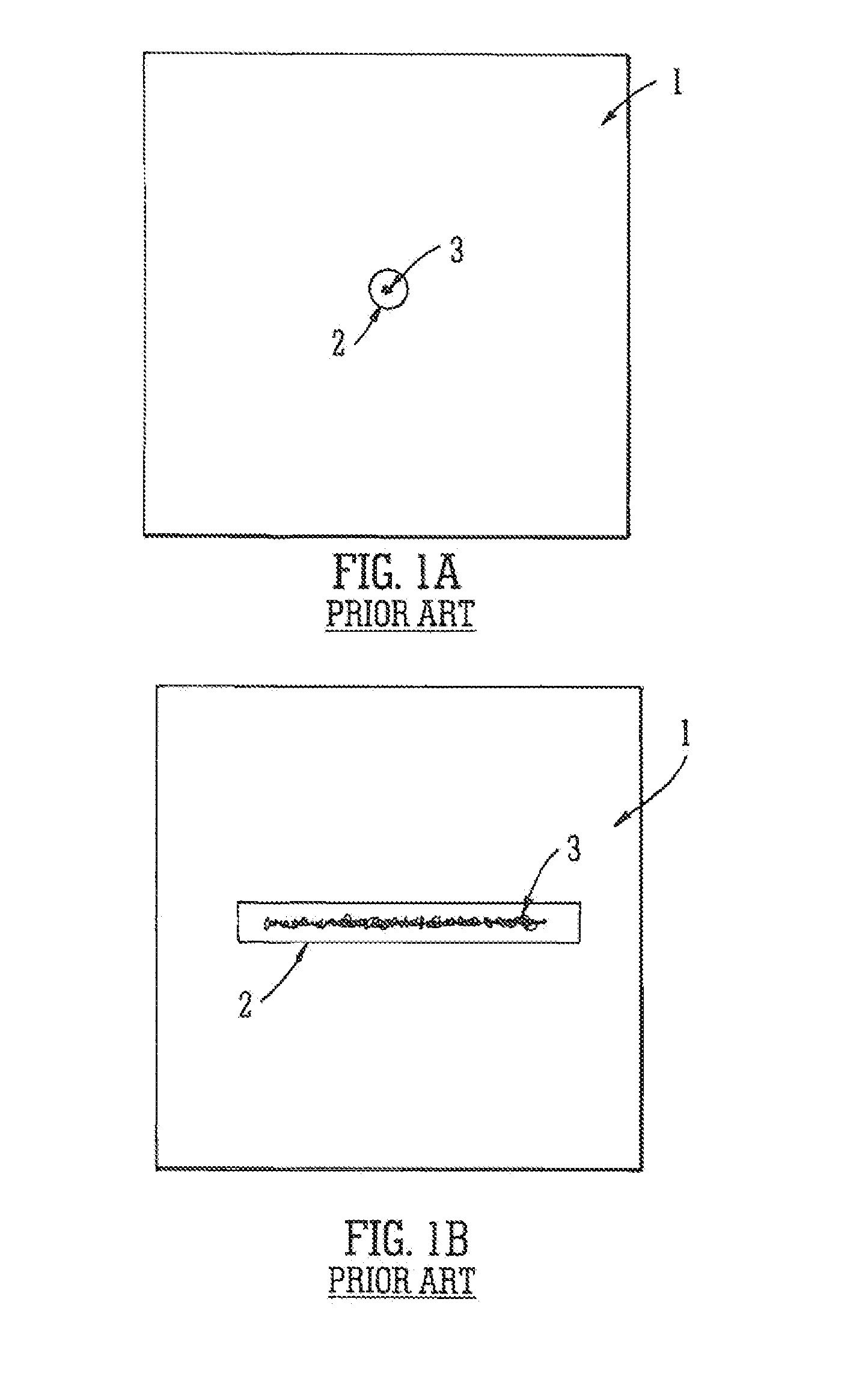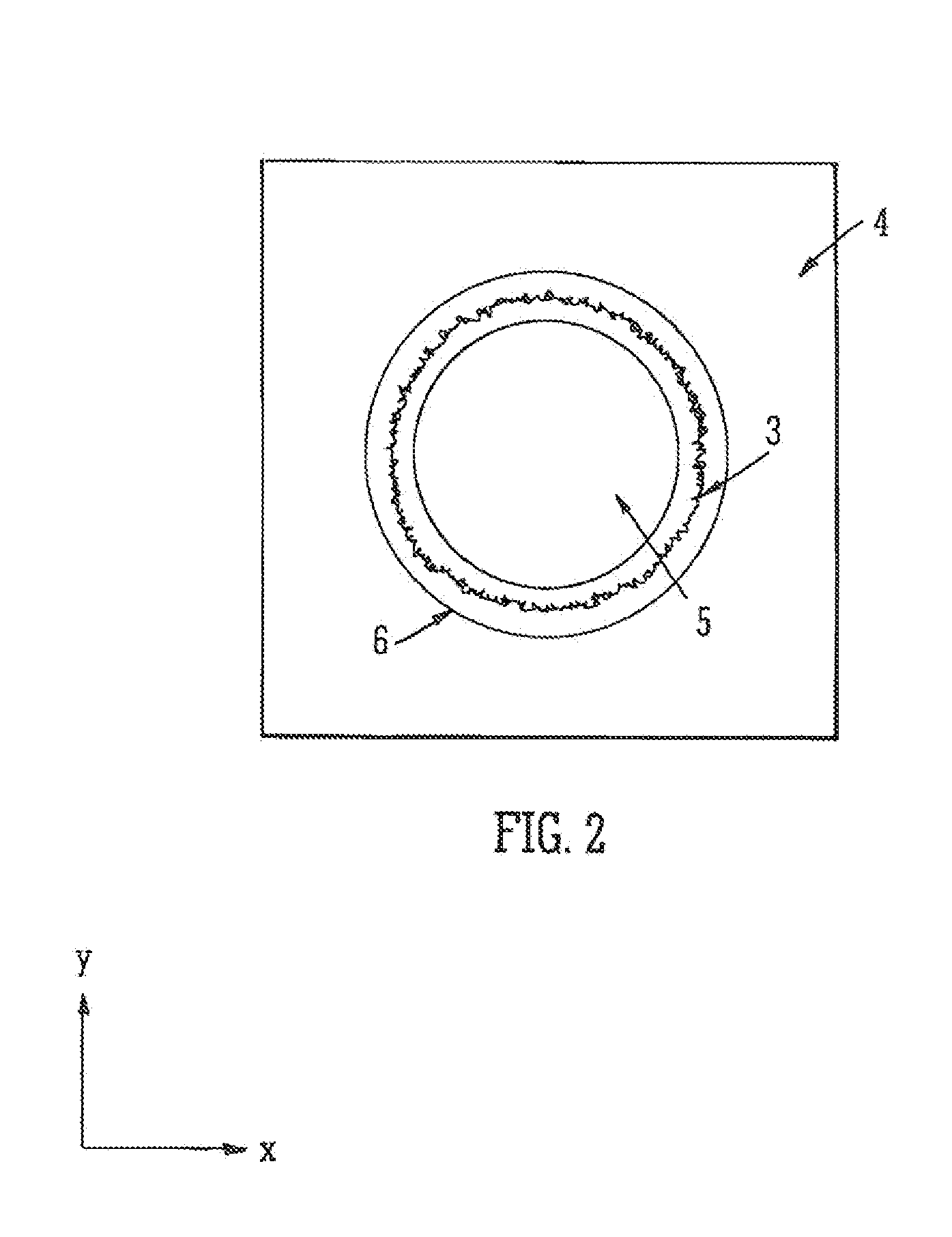Annular Ion Guide
a technology of annular ions and guides, applied in the direction of mass spectrometers, stability-of-path spectrometers, separation processes, etc., can solve the problems of significant disruption of the electric field, become difficult to apply transient dc or travelling dc voltage waves to such devices, and achieve increased charge capacity, large ions population, and high charge capacity
- Summary
- Abstract
- Description
- Claims
- Application Information
AI Technical Summary
Benefits of technology
Problems solved by technology
Method used
Image
Examples
Embodiment Construction
[0113]A conventional stacked ring on guide will first be described.
[0114]FIG. 1A shows an electrode 1 of a conventional stacked ring ion guide in the (x, y) plane. Each electrode 1 has a circular hole or aperture 2 which defines an ion trapping region in the radial (x, y) direction. An ion cloud 3 may be confined within this region and will extend the axial (z) direction. The conventional stacked ring ion guide comprises a series of electrodes 1 wherein axially adjacent electrodes are supplied with opposite phases of an RF voltage.
[0115]FIG. 1B shows another known stacked ring on guide in the (x, y) plane. According to this arrangement the opening or aperture 2 in each plate electrode 1 is elongated in one axis. Ions 3 may take up positions as shown in the (x, y) plane. It is apparent that the volume occupied by ions in the arrangement shown in FIG. 1B is greater than the volume occupied by ions in the arrangement shown in FIG. 1A.
[0116]However, as shown in FIG. 1B, ions cannot occu...
PUM
 Login to View More
Login to View More Abstract
Description
Claims
Application Information
 Login to View More
Login to View More - R&D
- Intellectual Property
- Life Sciences
- Materials
- Tech Scout
- Unparalleled Data Quality
- Higher Quality Content
- 60% Fewer Hallucinations
Browse by: Latest US Patents, China's latest patents, Technical Efficacy Thesaurus, Application Domain, Technology Topic, Popular Technical Reports.
© 2025 PatSnap. All rights reserved.Legal|Privacy policy|Modern Slavery Act Transparency Statement|Sitemap|About US| Contact US: help@patsnap.com



